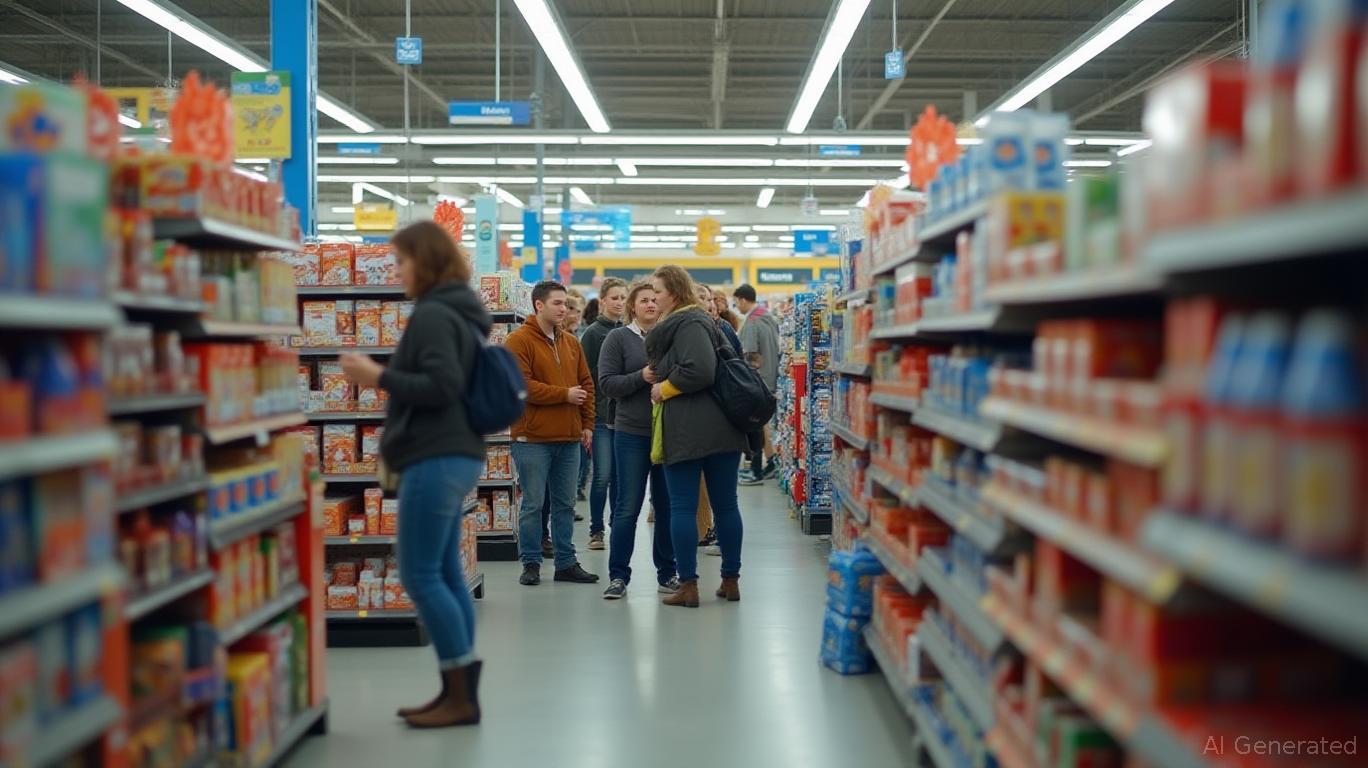Retail Recovery: Navigating Declines to Identify Undervalued Turnaround Plays
The U.S. retail sector faces a
of challenges in Q1 2025, with same-store sales (SSS) data revealing stark divergences across industries. While some sectors like Broadline Retail and Hotels/Restaurants show resilience, others, such as Textiles/Apparel and Department Stores, grapple with steep declines. Yet, beneath the surface lies a compelling opportunity: identifying undervalued companies positioned for recovery as consumer behaviors shift and operational adaptations take hold.The Sector Divide: Winners and Losers
The Textiles, Apparel & Luxury Goods sector leads in negative momentum, with projected earnings declining by 22.6% year-over-year. Under Armour's staggering 172.7% earnings drop and Capri Holdings' 134.5% decline underscore the sector's struggles. However, this gloom is tempered by bright spots. Discount retailers like Walmart (+3.8% SSS) and Costco (+6.8% SSS) thrived by offering value, while Citi Trends (+6.0%) and Aritzia (+15.8%) leveraged pre-Easter demand to post strong apparel sales.

In contrast, the Department Stores segment remains mired in stagnation. Kohl's (-5.4%) and Macy's (-4.3%) face headwinds from tariff pressures and shifting consumer preferences, yet their beaten-down valuations could signal a buying opportunity if operational improvements materialize.
Tech Retail's Tipping Point: Best Buy's Resilience
Best Buy's flat Q1 SSS performance marks a critical turning point. After a two-year average decline of 3.7%, the stabilization reflects strategic focus on high-growth categories like computing (+6%) and mobile phones (first positive comp in three years). Its omni-channel model—32% of sales online, with 60% of online orders available for same-day pickup—positions it to capitalize on evolving retail trends.
While tariffs and macroeconomic uncertainty cloud the outlook, Best Buy's guidance for a 1% SSS range in 2025 hints at cautious optimism. Initiatives like the Best Buy Marketplace and vendor partnerships to streamline in-store operations could unlock incremental profit streams, making the stock a compelling recovery play at current valuations.
The Casual Dining Edge: Brinker International's Lesson
The Restaurants sector offers another lens into recovery dynamics. Brinker International (+28.2% SSS) outperformed peers by focusing on value-driven menus and agile supply chains. Meanwhile, casual dining overall grew 5.5%, contrasting sharply with Quick Service's -0.6% decline. This bifurcation suggests investors should prioritize chains with pricing power and menu innovation, such as Lululemon (a +3.9% SSS performer in apparel) and DoorDash (833.3% earnings growth), which leveraged delivery demand.
Key Drivers and Strategic Plays
- Tariff Mitigation: Companies like Best Buy and Walmart, which have implemented supply chain diversification and cost controls, are better positioned to weather tariff pressures.
- Value-Driven Retail: Discounters and off-price retailers are capturing market share as consumers prioritize affordability. Citi Trends and Dollar General (not explicitly mentioned but implied by sector trends) stand out here.
- E-Commerce Integration: Retailers with robust online-to-offline capabilities, such as Best Buy and Lowe's (which saw transaction growth despite SSS declines), can navigate physical store headwinds.
A Call to Action: Buy the Dip
The retail sector's volatility presents a rare opportunity to acquire undervalued assets at cyclical lows. Consider:
- Aritzia (15.8% SSS growth): A niche player in sustainable fashion with a loyal customer base.
- Brinker International: Demonstrates how operational agility can turn around a struggling segment.
- Best Buy: A bellwether for tech retail's recovery, trading at a 20% discount to its five-year average P/E ratio.
While Amazon's 62.2% earnings surge may dominate headlines, its dominance in Broadline Retail leaves little room for upside. Instead, focus on underfollowed names in beaten-down sectors. The LSEG SSS index's 3.8% Q1 growth forecast suggests a bottoming-out process—investors who act now could capitalize on the rebound.
Final Word: Patience, but Act Now
Retail's recovery will be uneven, but the data points to clear winners. Companies with pricing discipline, digital integration, and cost controls will outperform. The time to position for recovery is now—before the sector's undervalued gems catch the broader market's attention.
Act swiftly, but selectively. The next retail boom is being built on today's doldrums.

Comments
No comments yet